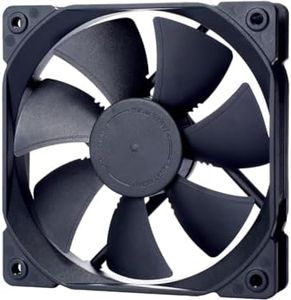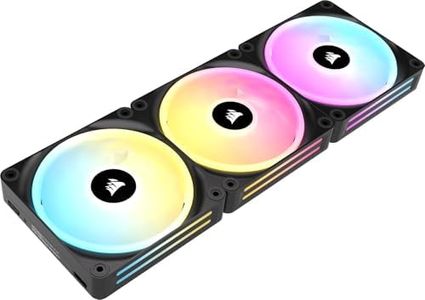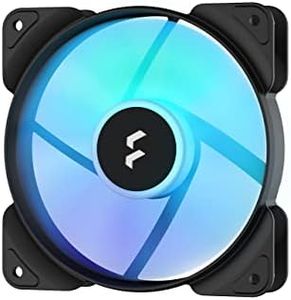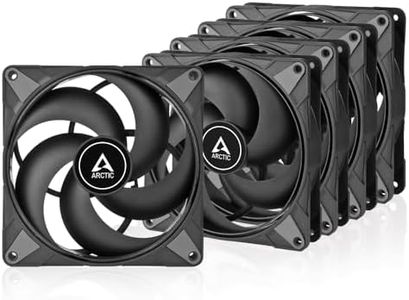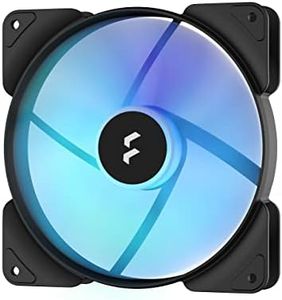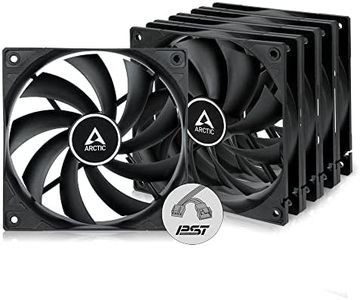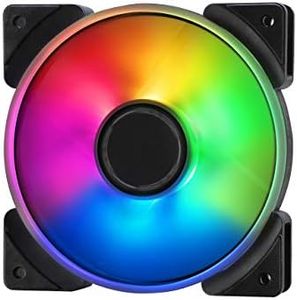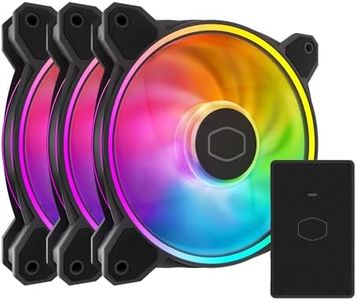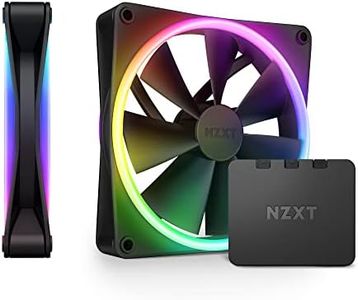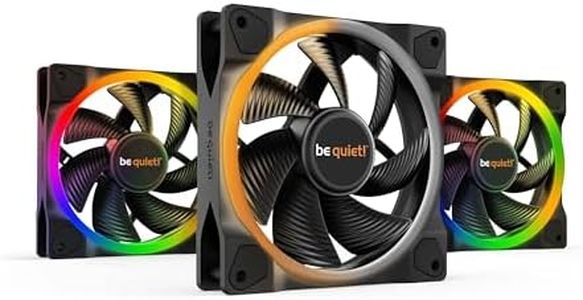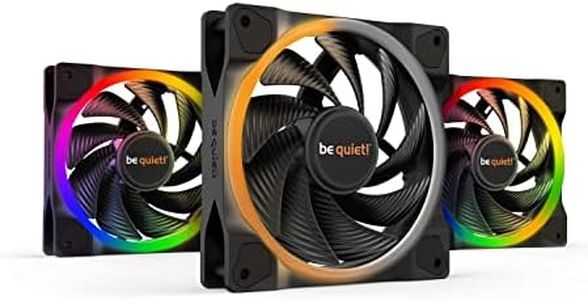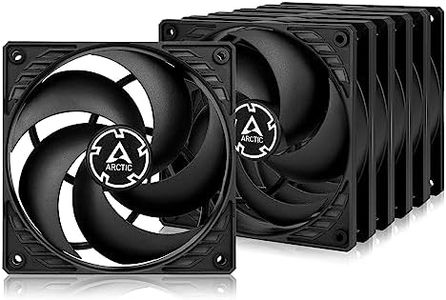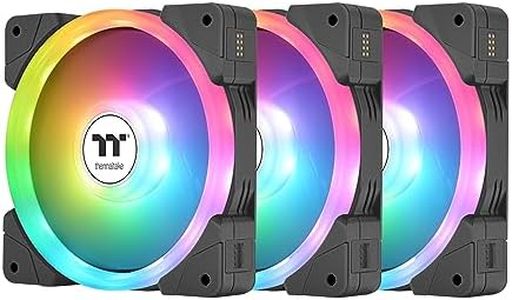10 Best Quiet PC Fans 2025 in the United States
Our technology thoroughly searches through the online shopping world, reviewing hundreds of sites. We then process and analyze this information, updating in real-time to bring you the latest top-rated products. This way, you always get the best and most current options available.

Our Top Picks
Winner
Fractal Design Dynamic X2 GP-12 PWM Computer Fan - Silent Fan - High Airflow - 120 x 120 x 25 mm - 2000RPM - FDB-Bearings - Trip Wire - Aerodynamically Shaped Struts - Black Edition (Single)
Most important from
1076 reviews
The Fractal Design Dynamic X2 GP-12 PWM is a 120mm PC fan designed with quiet operation and strong airflow in mind. It spins up to 2000 RPM, which is quite fast for a 120mm fan, allowing it to move a good amount of air to keep your system cool. The fan uses fluid dynamic bearings (FDB), known for durability and smooth, quiet rotation over time. It also supports PWM control, meaning your PC can adjust the fan speed automatically to balance cooling needs and noise levels.
One standout strength is its aerodynamic design, including features like the ‘Trip Wire’ and shaped struts that help reduce turbulence and noise. This means it can provide high airflow without being overly loud, which is a key factor for quiet PC builds. The fan’s 14.4-watt power consumption is somewhat higher than average, indicating it’s focused more on performance while keeping noise manageable. Its sturdy copper material and solid build add to its durability, making it a reliable choice for desktop cooling.
This fan is ideal for those who want a quiet PC fan that doesn't sacrifice airflow, making it suitable for gaming rigs or workstations where cooling efficiency and noise control both matter. If ultra-quiet operation at low RPMs is your top priority, there might be quieter options available, but this fan offers a good balance of airflow, noise, and build quality.
Most important from
1076 reviews
Corsair iCUE LINK QX120 RGB 120mm Magnetic Dome RGB Fans - Triple Fan Starter Kit with iCUE LINK System Hub - Black
Most important from
1521 reviews
The Corsair iCUE LINK QX120 RGB fans offer a good balance between cooling performance and quiet operation, making them suitable for users seeking effective yet low-noise PC fans. These 120mm fans feature a magnetic dome bearing that helps reduce friction and noise, especially at lower speeds. They operate between 480 and 2,400 RPM and can push up to 63.1 cubic feet of air per minute, providing strong cooling capability without always running at full speed. Noise levels reach about 37 decibels at maximum speed, which is noticeable but still relatively quiet compared to many standard fans. The included PWM control adjusts fan speed automatically based on your system's temperature, and a Zero RPM mode lets the fans stop completely when cooling demand is low, eliminating noise entirely in those moments.
Aesthetically, these fans come with bright RGB lighting and unique effects, controlled via Corsair's iCUE system, which also allows you to connect multiple fans neatly with a hub and bridge connectors. While the noise at peak performance is higher than ultra-quiet fans, the price reflects the premium features and lighting. These fans represent a solid choice for efficient cooling with customizable lighting and quieter operation in a well-coordinated setup.
Most important from
1521 reviews
Buying Guide for the Best Quiet PC Fans
Choosing the right PC fan is crucial for maintaining your computer's performance and longevity. A quiet PC fan can significantly reduce noise levels, making your workspace more comfortable and less distracting. When selecting a PC fan, it's important to consider several key specifications to ensure you get the best fit for your needs. Here are the main specs to look out for and how to navigate them.FAQ
Most Popular Categories Right Now
